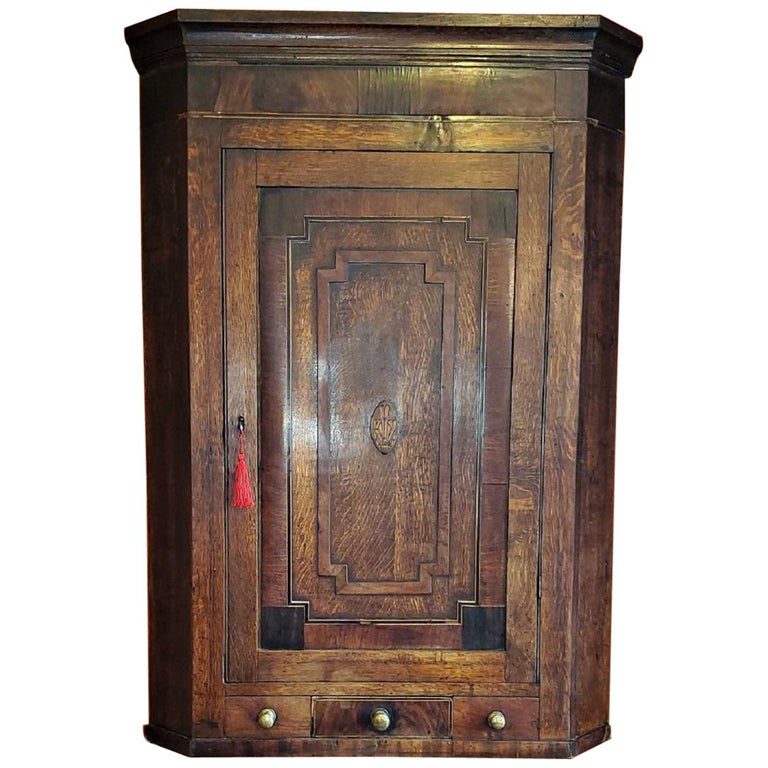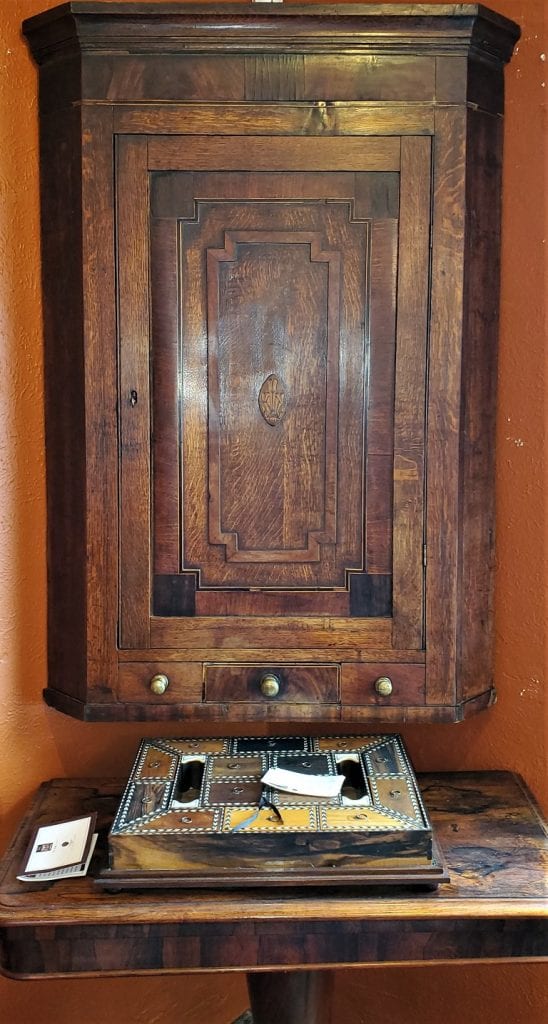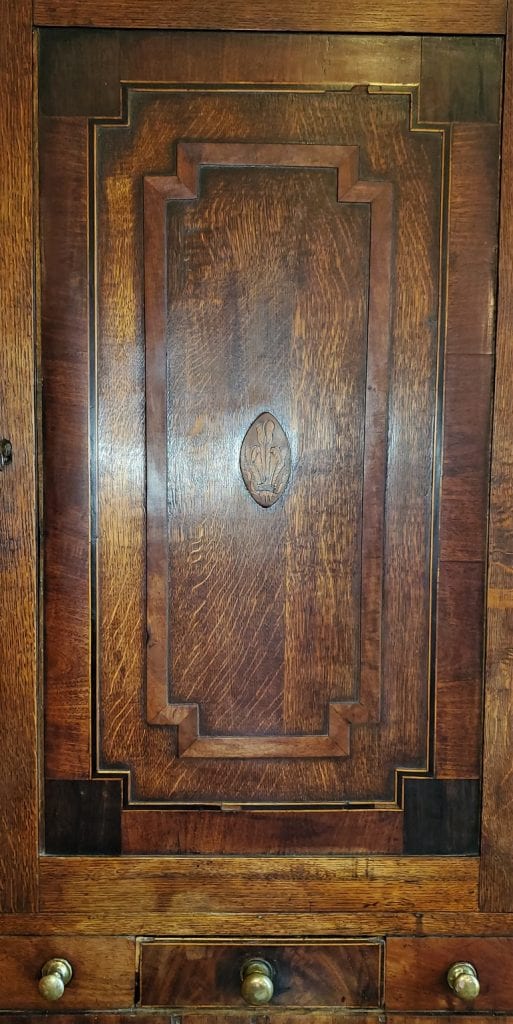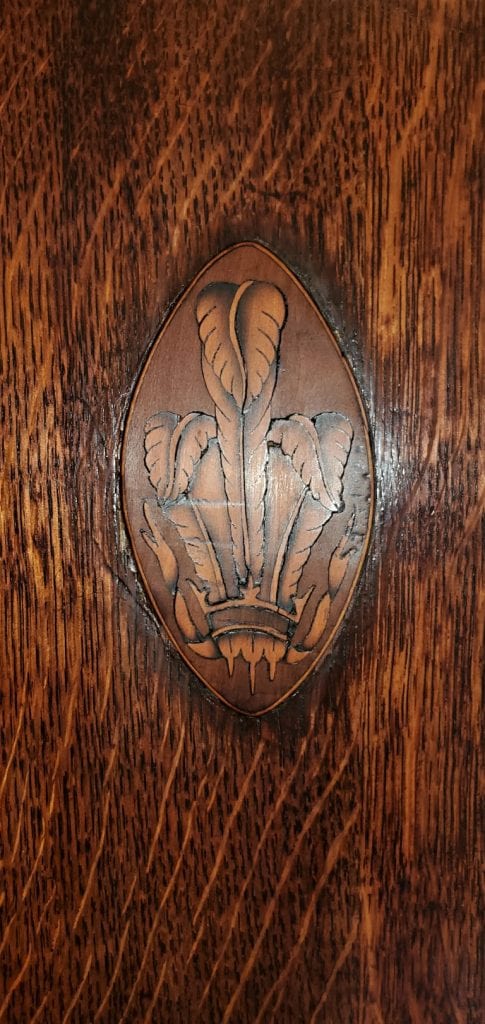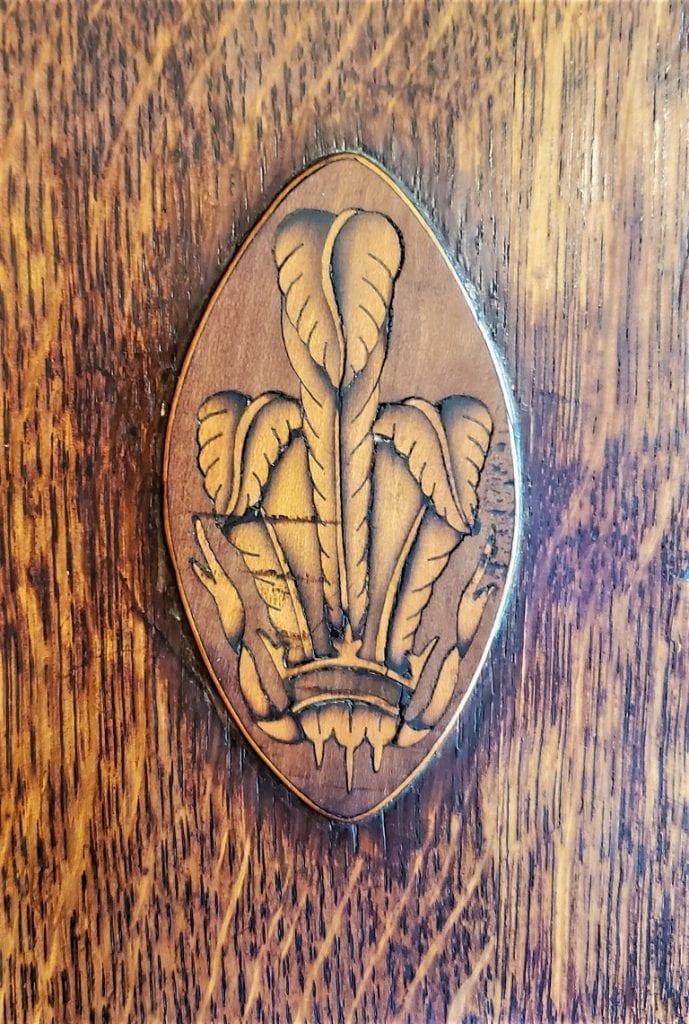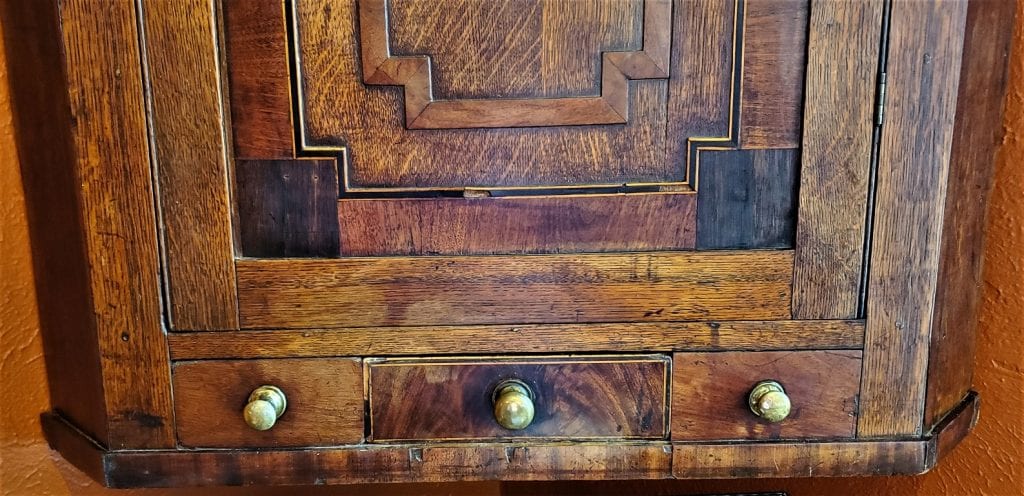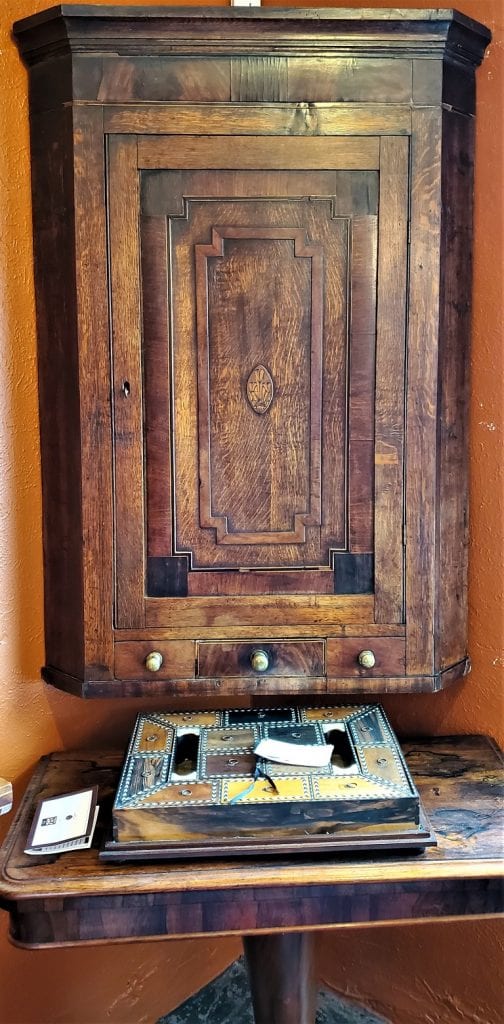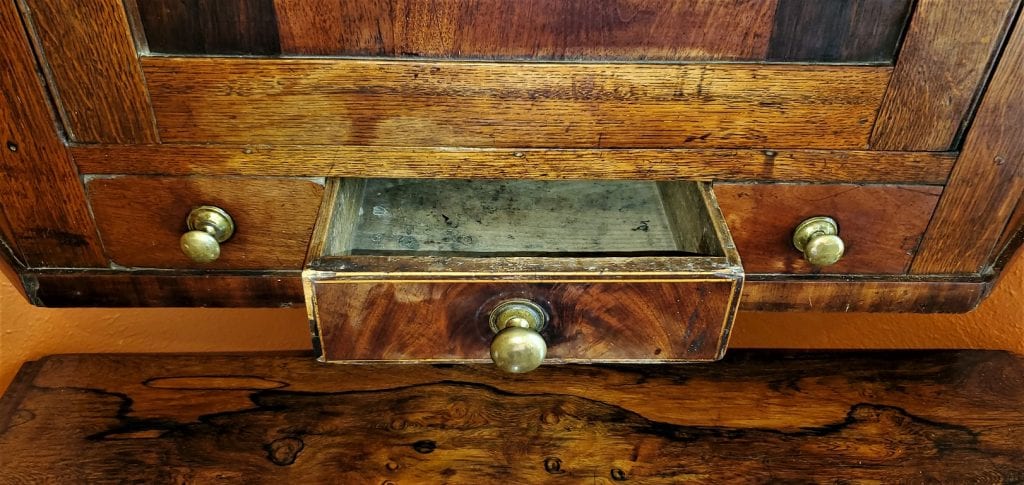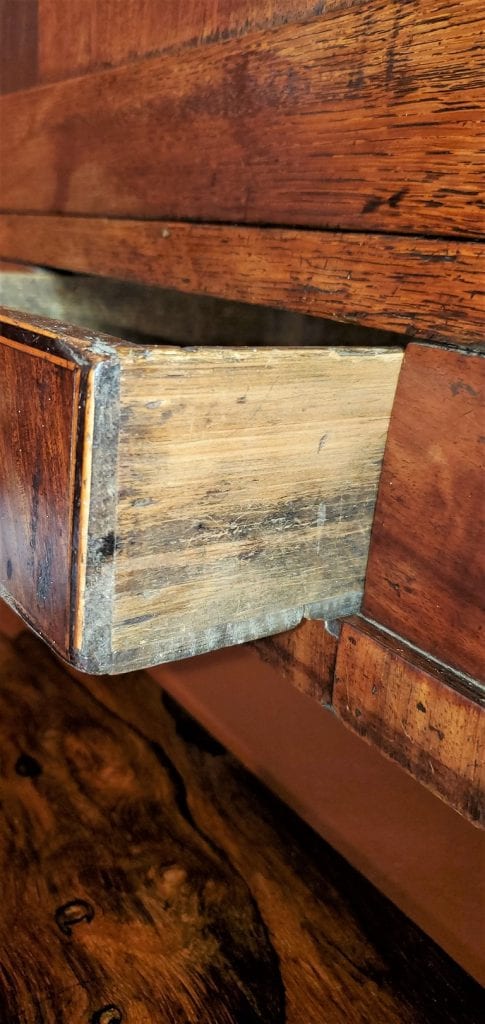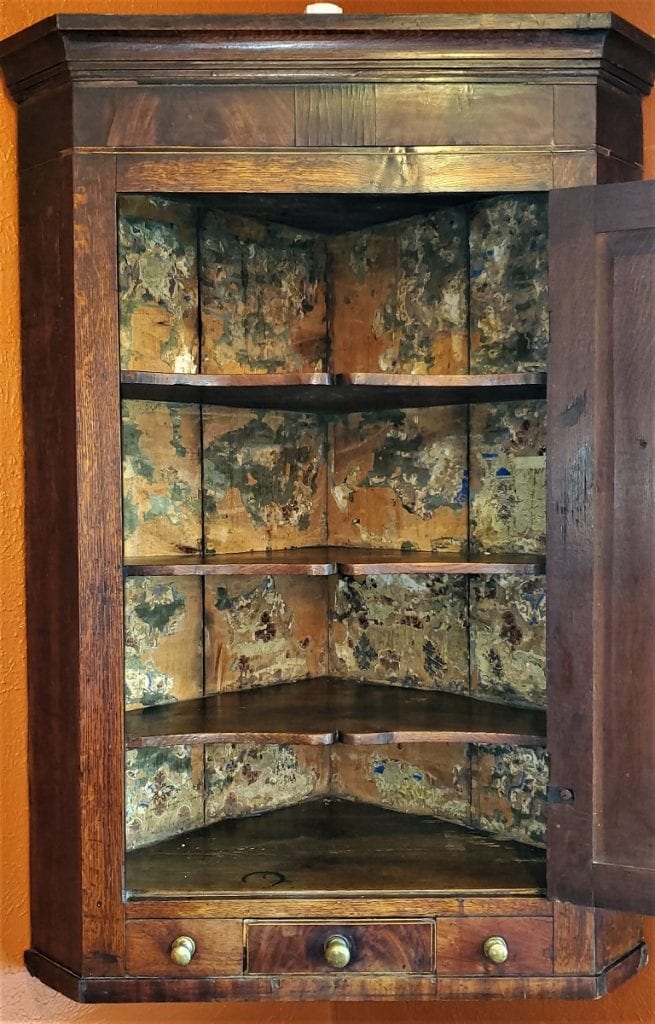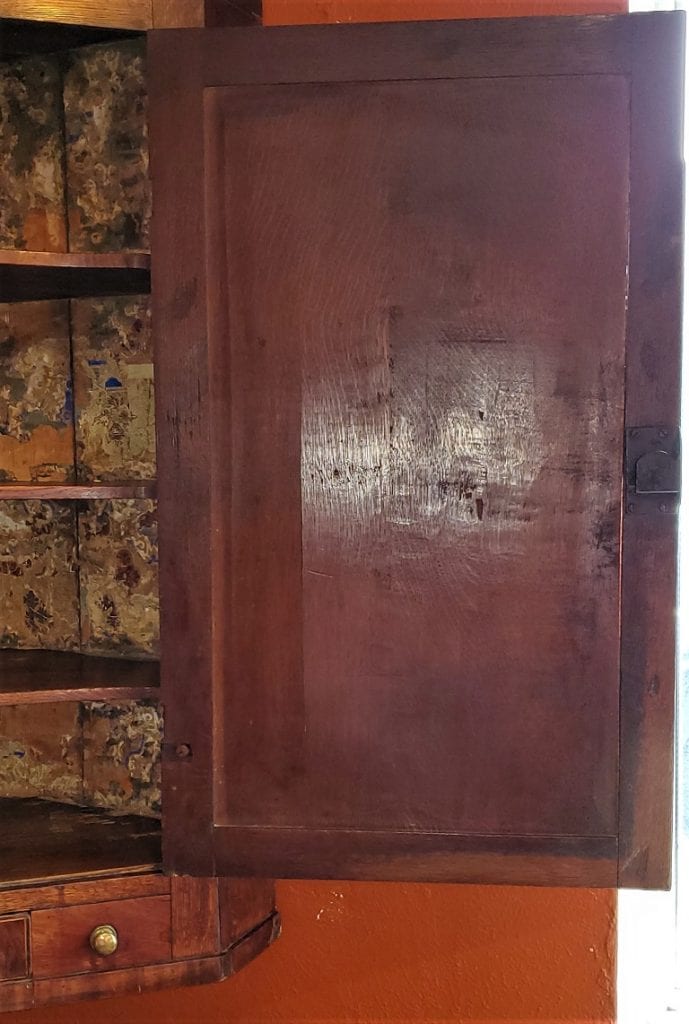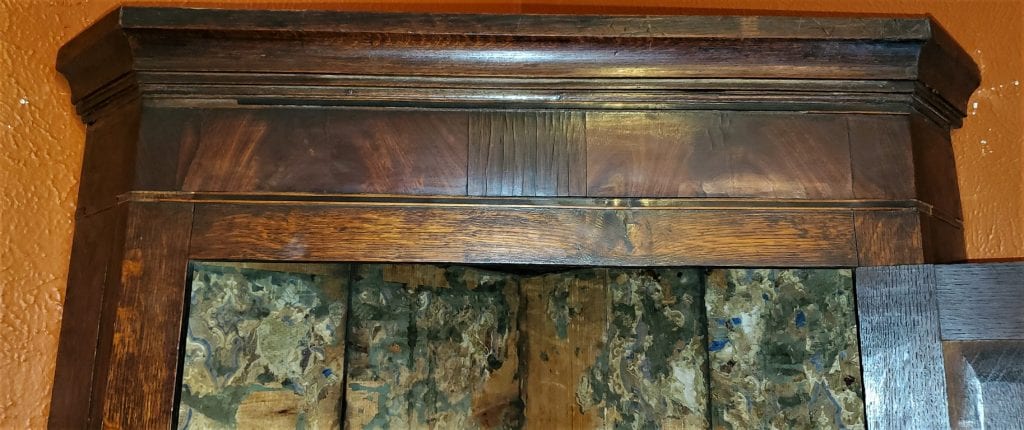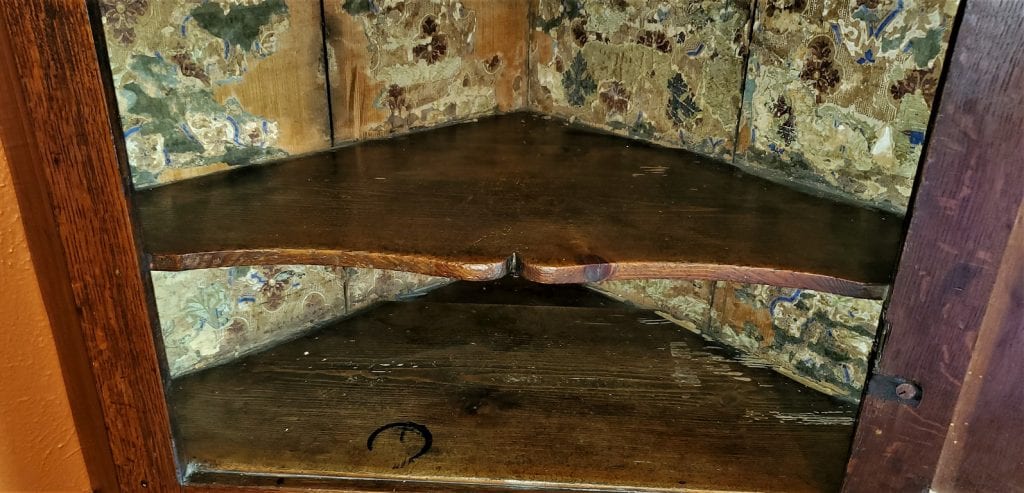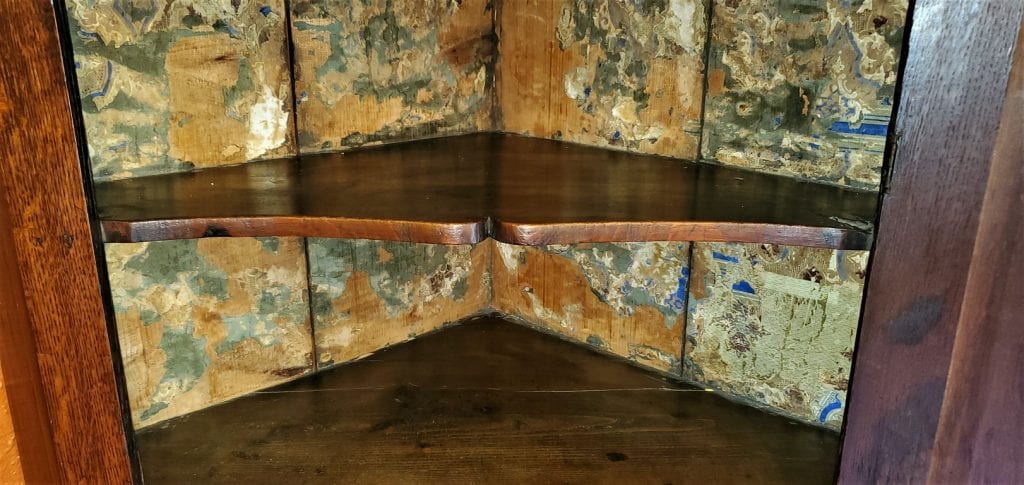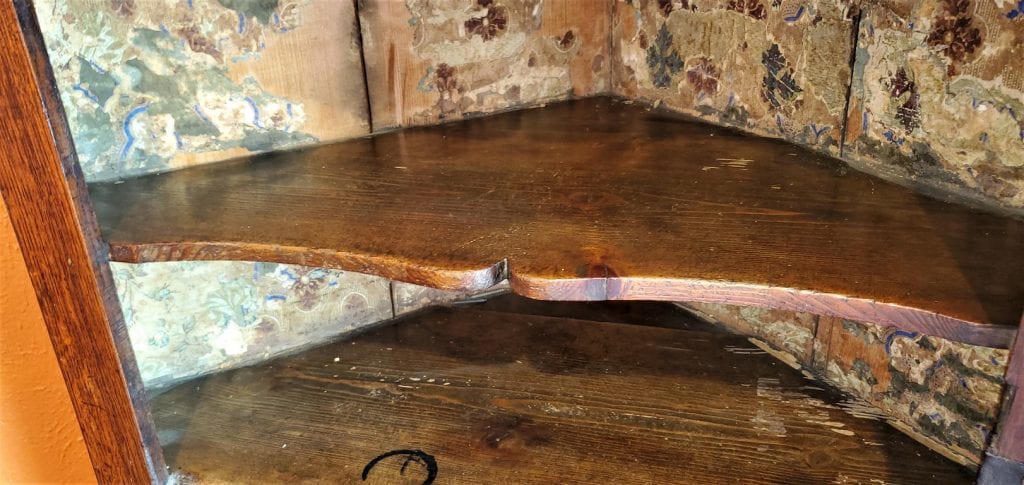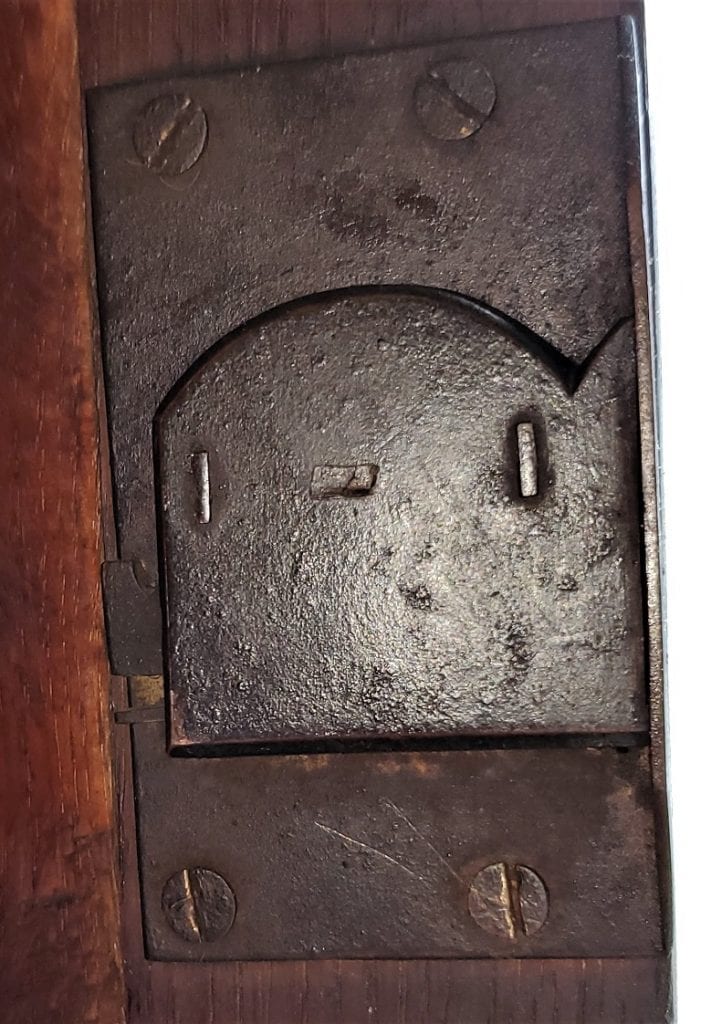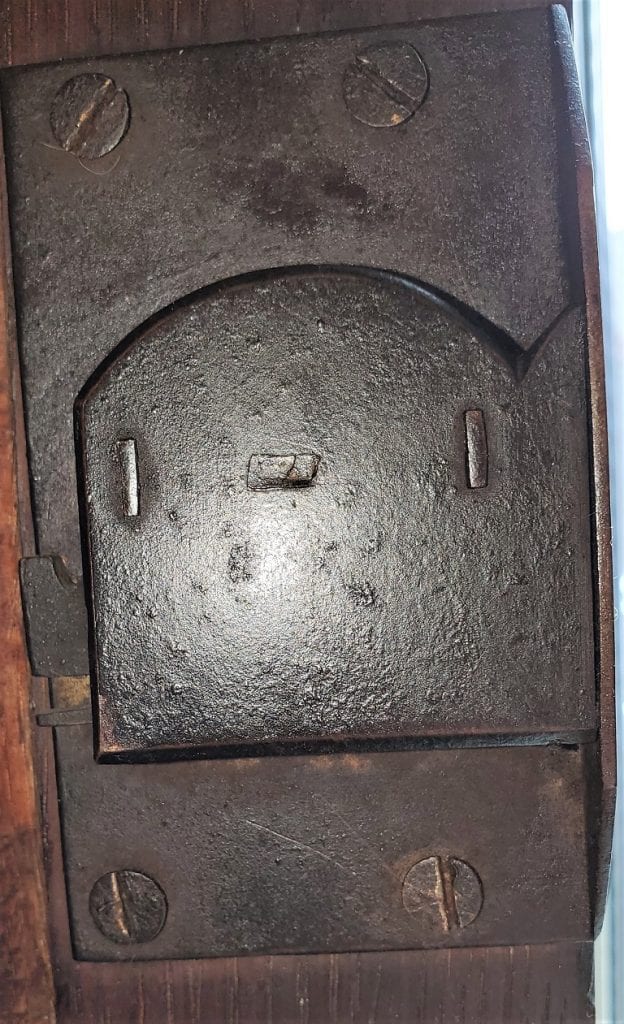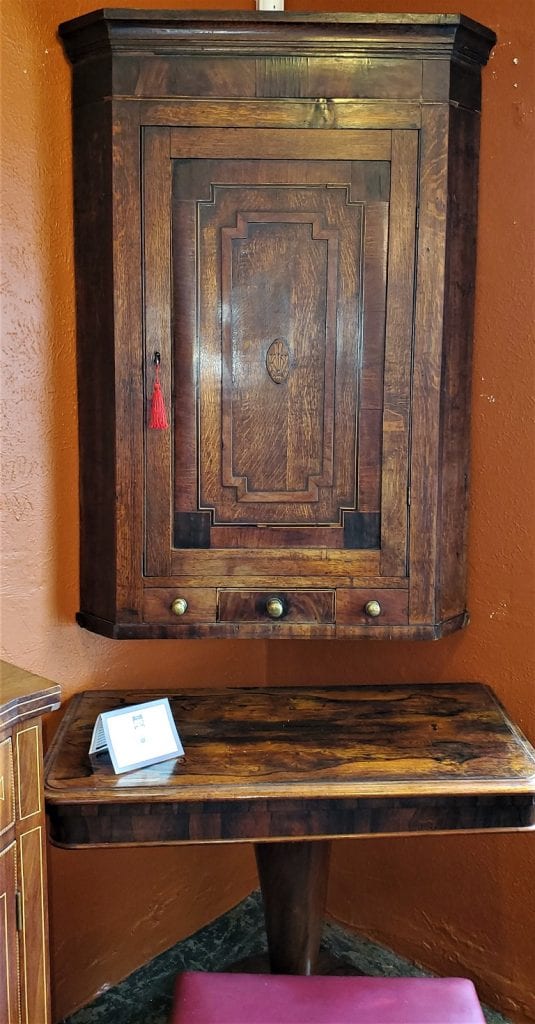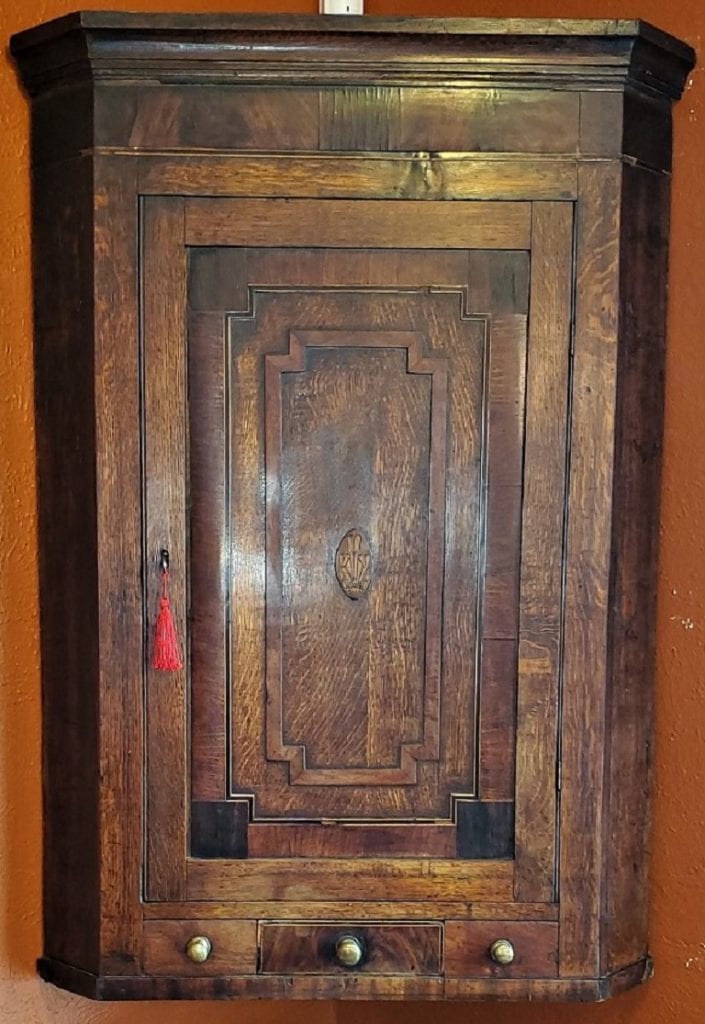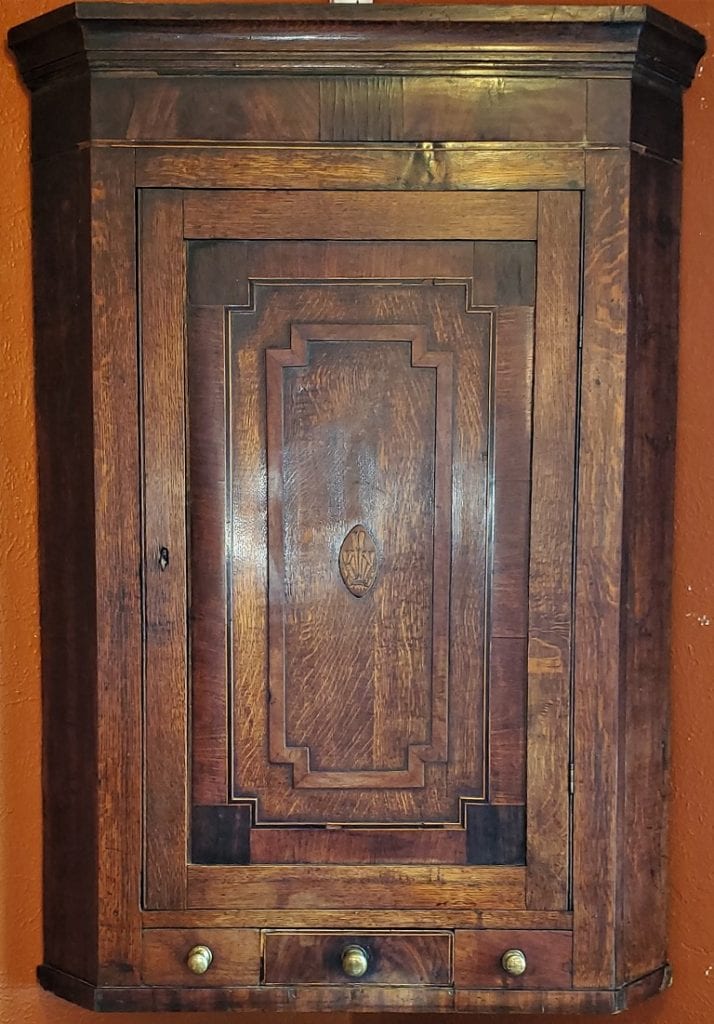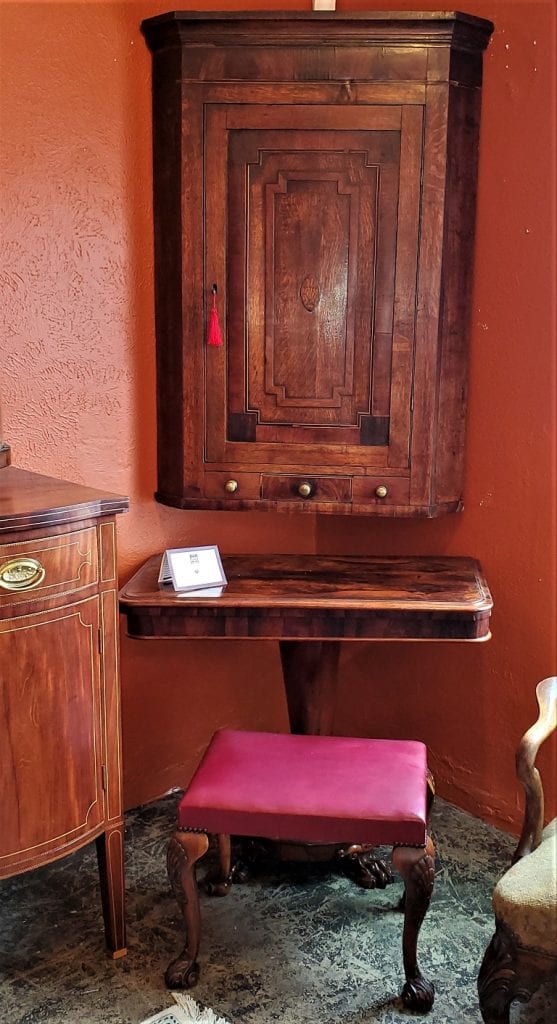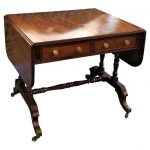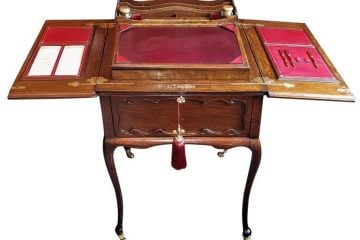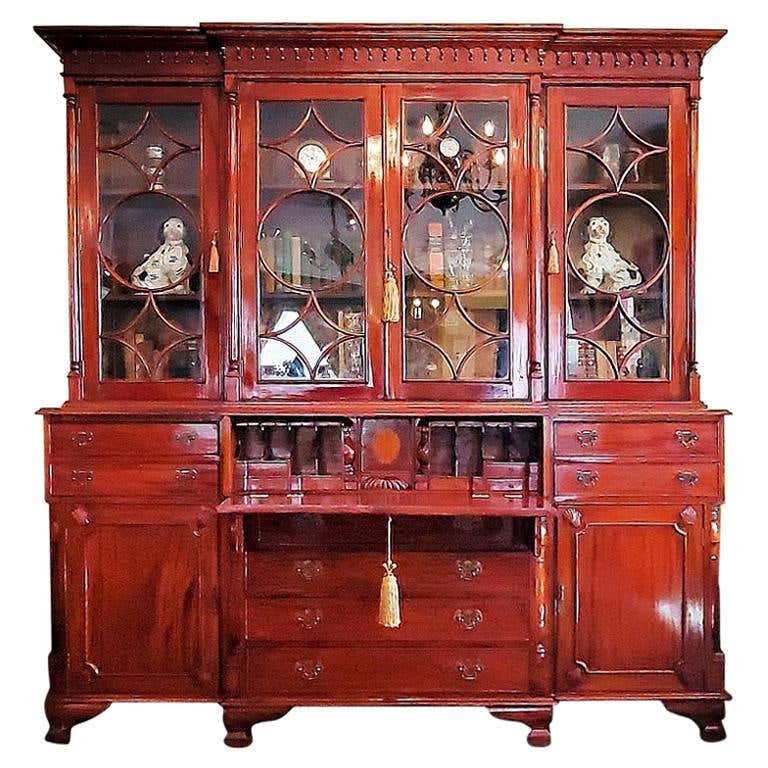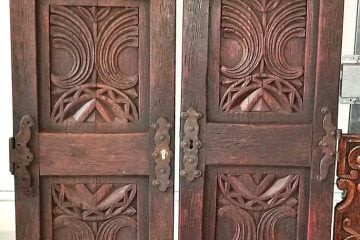Late 18C English Regency Corner Wall Cabinet
PRESENTING AN IMPORTANT PIECE of English furniture, namely, a Late 18C English Regency Corner Wall Cabinet.
What makes this corner wall cabinet so important is the inlaid marquetry medallion in the center of the front door.
The medallion is the ‘Prince of Wales Plumes’ which signifies that this piece was made during the reign of the Prince Regent (later to become George IV in 1820).
The piece itself was made circa 1795 – 1815.
It is in CLASSIC REGENCY Form and is made from a combination of various woods. Tiger oak, flame mahogany, rosewood, ebony and satinwood stringing. The medallion is inlaid with satinwood or yew wood.
The inlay is of exceptional detail and quality !
It has it’s original lock and working key.
The interior of the cabinet has 4 shelves and evidence of historic wallpaper on the back walls.
The bottom section has 2 faux drawers, either side of a central drawer each with it’s original brass knob.
The secondary woods are pine, as one would expect.
It is VERY RARE to find a piece of furniture from this Era that specifically identifies itself as a Prince Regent piece !!! These pieces were only made in a 20-25 year period.
A STUNNING PIECE OF HISTORIC FURNITURE !
THIS WOULD HAVE HELD ‘PRIDE OF PLACE’ IN A MANOR HOUSE IN THE UK !
The Regency in the United Kingdom of Great Britain and Ireland was a period at the end of the Georgian era, when King George III was deemed unfit to rule due to his illness, and his son ruled as his proxy, as prince regent. Upon George III’s death in 1820, the prince regent became King George IV. The term Regency (or Regency era) can refer to various stretches of time; some are longer than the decade of the formal Regency, which lasted from 1811 to 1820. The period from 1795 to 1837, which includes the latter part of George III’s reign and the reigns of his sons George IV and William IV, is sometimes regarded as the Regency era, characterised by distinctive trends in British architecture, literature, fashions, politics, and culture.
The Regency is noted for its elegance and achievements in the fine arts and architecture. This era encompassed a time of great social, political, and economic change. War was waged with Napoleon and on other fronts, affecting commerce both at home and internationally, as well as politics. However, despite the bloodshed and warfare, the Regency was also a period of great refinement and cultural achievement, which shaped and altered the societal structure of Britain as a whole.
One of the greatest patrons of the arts and architecture was the Prince Regent himself (the future George IV). Upper-class society flourished in a sort of mini-Renaissance of culture and refinement. As one of the greatest patrons of the arts, the Prince Regent ordered the costly building and refurbishing of the beautiful and exotic Brighton Pavilion, the ornate Carlton House, as well as many other public works and architecture (see John Nash, James Burton, and Decimus Burton). Naturally, this required dipping into the treasury, and the Regent, and later, the King’s exuberance often outstripped his pocket, at the people’s expense.
Link: https://en.wikipedia.org/wiki/Regency_era
Late 18C English Regency Corner Wall Cabinet.
Provenance: Acquired at a High End Auction.
Condition: Very good for it’s age and use. Some minor losses of stringing. Original condition.
Dimensions: 49.5 inches Tall, 38 inches Wide and 18 inches Deep.
SALE PRICE NOW: $3,250
